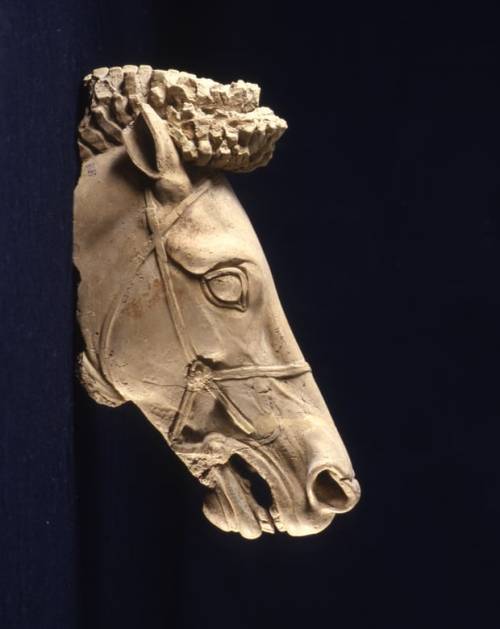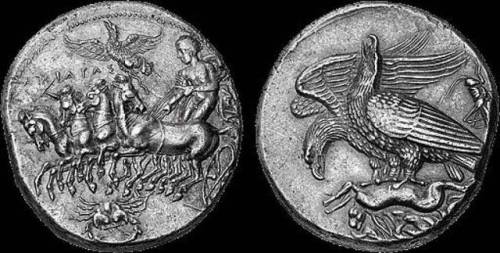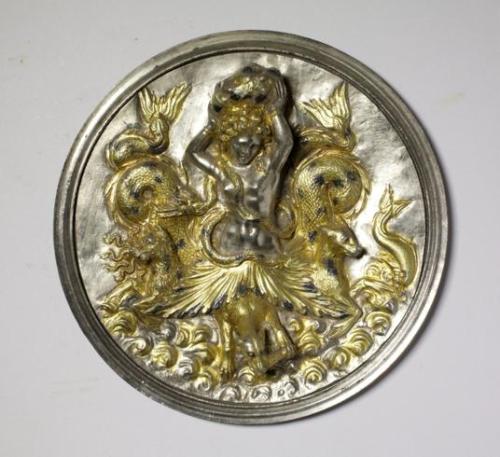ferribotti:VISITING SICILY - La Venere di Morgantina, Vaso Greco, Bassorilievo con Hera, Monete Akra
ferribotti:VISITING SICILY - La Venere di Morgantina, Vaso Greco, Bassorilievo con Hera, Monete Akragas, Gigantomachia Tempio F Agrigento, Medaglione Greco, Akragas guerriero in marmo,vaso greco, testa di Dea.VISITING SICILY - You must know that beauty is not a quality, it is a reflection of the soul, so if you want to understand the beauty of the ancient Greeks, you must know their art and through it understand perfection. Theirs was a perfect beauty, we can say mathematics, where the proportions of bodies and buildings responded to precise geometric rules. Despite this, the naturalness of their works is disconcerting, as is their modernity. For this reason, when Gothe arrived in Sicily, he was so fascinated by saying that without Sicily Italy was nothing. In the beauty of the ancient Greeks the German poet saw the origin of the Roman one and therefore the source of all harmony and perfection. So if you arrive in Sicily, if you want to understand its beauty, you must visit a museum where there are the ancient Greek artifacts. In this way you will be able to understand that all that followed, the Arab-Norman beauty, the noisy harmony of Sicilian baroque, have their natural completion in the treasures of ancient Greece. You will understand how the diversity and its integration in the island culture is the most original point that Sicily has given to the European culture. For this, in your list of things to do in Sicily you have to put a visit to something of the ancient Greeks, whether it is a theater, a museum or a find, will depend on your desire and your time available, but only by visiting these ancient stones or vases or statues, you can say “I’ve been in Sicily”.To help you add below the list of Sicilian museums where you can see the works I showed you.VISITANDO LA SICILIA – Devi sapere che la bellezza non è una qualità, è un riflesso dell’anima, così se vuoi comprendere la bellezza degli antichi greci, devi conosce la loro arte e attraverso di essa comprendere la perfezione. La loro era una bellezza perfetta, possiamo dire matematica, dove le proporzioni dei corpi e degli edifici rispondevano a regole geometriche precise. Malgrado questo, la naturalezza delle loro opere è sconcertante, così come la loro modernità. Per questo motivo, quando Gothe arrivò in Sicilia, ne rimase affascinato tanto da dire che senza la Sicilia l’Italia era nulla. Nella bellezza degli antichi greci il poeta tedesco vedeva l’origine di quella romana e quindi la sorgente di ogni armonia e perfezione. Per questo se arrivi in Sicilia, se vuoi comprendere la sua bellezza, devi visitare un museo dove vi sono gli antichi reperti greci. In questo modo potrai comprendere che tutto quello che è seguito, la bellezza Arabo-Normanna, la chiassosa armonia del barocco siciliano, hanno nei tesori dell’antica Grecia un loro naturale completamento. Capirai così come la diversità e la sua integrazione nella cultura isolana sia il punto più originale che la Sicilia ha dato alla cultura Europea. Per questo, nel tuo elenco di cose da fare in Sicilia devi mettere una visita a qualcosa degli antichi Greci, che sia un teatro, un museo o un reperto, dipenderà dalla tua voglia e dal tuo tempo a disposizione, ma solo con visitando queste antiche pietre o vasi o statue, potrai dire “Sono stata in Sicilia”.Per aiutarti aggiungo qui di seguito l’elenco dei musei siciliani dove potrai vedere le opere che ti ho mostrato.Agrigento• Agrigento, Archaeological Museum. Finds of prehistoric cultures of the area, of the necropolis of Agrigento, Greek statuary of the V century a. C., ceramics.• Cattolica Eraclea, Antiquarium of Eraclea Minoa (near the excavations). Finds related to the various periods of Eraclea: archaic, Greek and Roman.Enna• Aidone, Archaeological Museum. Archaeological finds from the excavations of Morgantina.• Enna, “Alessi” Museum. Greek-Roman coins and finds from the territory.Ragusa• Ispica, Antiquarium of the Parco della Forza. Archaeological finds, coins and amphorae.• Ragusa, Archaeological Museum of Camarina. Finds from the city and the Camarina necropolis.• Ragusa, Ibleo Archaeological Museum. Finds from the territory of the ancient Hybla Heraria and from Camarina.Caltanissetta• Caltanissetta, Archaeological Museum. Finds from prehistoric times to Roman times.Messina• Giardini Naxos, Naxos Archaeological Museum. Finds from the excavations of ancient Naxos, VIII-VI century to. C.• Lipari, Regional Archaeological Museum. Prehistoric, classical, volcanological and palaeontological, epigraphic sections. Collection of theatrical terracotta.• Pacts, Antiquarium. In the archaeological area, history and topography of the ancient city of Tyndaris and Greek-Roman finds.Syracuse• Syracuse, “Orsi” Regional Archaeological Museum. Finds from the Paleolithic, Neolithic, Bronze Age, Greek colonies of Megara and Syracuse, ceramics.• Syracuse, Papyrus Museum. Ancient papyrus and papyrus history.Trapani• Marsala, “Baglio Anselmi” Archaeological Museum. Finds from the territory of the ancient Lilibeo, Punic ship of Capo Lilibeo.• Marsala, island of Mozia, “G. Withaker” Museum. Phoenician finds from the excavations of Mozia. Greek statue called “the young of Mozia”.Catania• Aci Castello, Museo Civico. Archaeological material from the Neolithic to the medieval age.• Acireale, Zelantea Art Gallery. Greek-Roman archaeological finds.• Caltagirone, Civic Museums and Pinacoteca “L. Sturzo”. Archaeological finds from prehistory to the Greek age.• Catania Civic Museum of Castello Ursino. Greek and Roman sculptures, bronzes, coins.• Randazzo, “P. Vagliasindi” Archaeological Collection. Greek ceramics, bronze finds, glasses, coins.Palermo• Cefalù, Museum of the “Mandralisca” foundation. Archaeological finds from the 7th to the 1st century to. C.• Palermo, Regional Archaeological Museum “A Salinas”. Egyptian, Phoenician-Punic collections, sculptures by Selinunte, Etruscan art, collection of terracotta, Roman sculpture, Greek ceramics. -- source link
Tumblr Blog : ferribotti.tumblr.com
#ancient#art#roman#greek#sicily#museums









